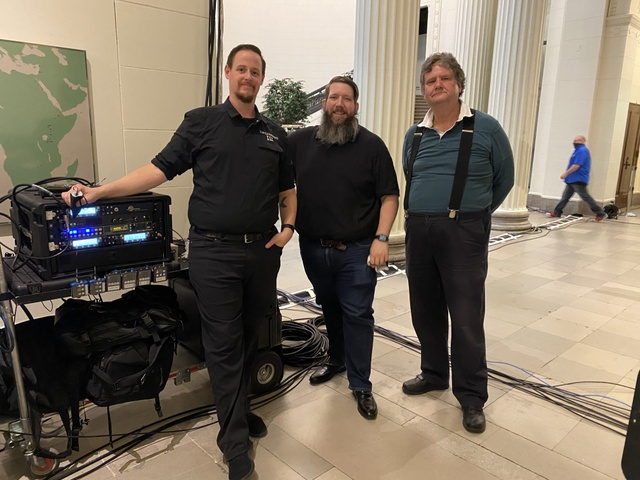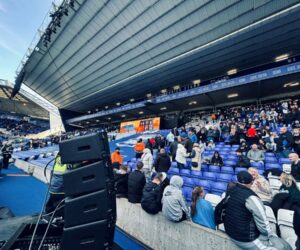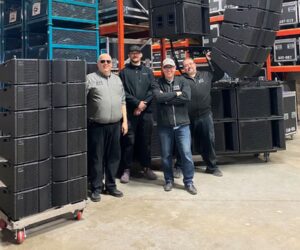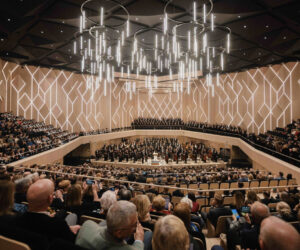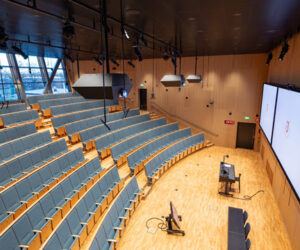“La Hija de Rappaccini,” a contemporary opera based on a Nathaniel Hawthorne story composed by Daniel Catán that was recently livestreamed by the Chicago Opera Theater from the city’s Field Museum of Natural History saw the theater’s audio and video production partner, Valhalla Media, teaming with location audio specialist Second City Sound on A/V support, utilizing Lectrosonics D Squared digital wireless systems and components.
Specifically, DBSMD transmitter-recorders fitted to the cast members were picked up by a pair of DSQD four-channel receivers, while DCHT portable digital stereo transmitters joined an M2T for monitoring by the conductor and mission-critical crew via M2R receivers.
“Midway through the pre-production process, we found out that the opera would be live at the Field Museum,” says Nikolas Wenzel of Valhalla Media. “This presented all sorts of logistical challenges for coverage. My first thought was that for reinforcement of the vocalists, we were going to need something stable, reliable, and easy to use between different levels of the museum. One of the performance levels was on the floor of the great hall and another was tucked off up to the side.”
Gerry Formicola of Second City Sound adds, “One thing viewers of the stream didn’t see was that the Field Museum was active and open to the public during the show run. This meant that everything had to be set up each day, then struck and stored. The fact that the Lectro system was so quick and easy to get up and running made a huge difference here.”
“I was the guy who had to deal with all of that,” comments audio director Brad Galvin. “Twenty, maybe 25 minutes and we were good to go every time.”
The wideband range of the D Squared hardware was key in helping to ensure the cast’s singing was captured without a problem. “Chicago may not be the worst place in the country in terms of RF density, but it’s certainly not the best,” notes Galvin, who first encountered Lectrosonics while working with Formicola on the Oprah Winfrey show. “So, the name of the game is bandwidth because you tend to spread channels all over the spectrum. With the DSQDs, DBSMDs, and M2 Duet [monitor system] covering the whole range 470 to 608 MHz, we could home in on clean frequencies without thinking about which gear is on block 19, which is on block 21, and so on. I wound up putting the DBSMDs, which were the body packs for the talent, lower in the spectrum and the monitors higher. Lectrosonics RF circuitry is great when it comes to packing channels close together, but with the wideband tuning range, we didn’t even need to worry about that. I did all the control from the Wireless Designer software, which I’d never used before. I was amazed at how easy it was to use.”
DBSMDs are also compact for transmitters that pack dual batteries, a trait that Wenzel says went over well with the cast. “I’ve worked a lot of these sets as a technical guy and also as a performer,” he explains, “and there are very few instances where opera singers actually get miked up; it’s an adjustment for them. The small size helped the cast keep it out of mind, and we were able to place them underneath the shoulder, which avoided any tugging issues with the mic wires. Because this was all live, if for any reason we had to do a quick change, they were easy to access.”
The dual batteries of the DBSMDs dual also played an important role. “Those were all that were available at the time,” laughs Formicola. “We received five of the DBSMDs and they were some of the first off their assembly line. With the [single-battery] DBSMs, we would’ve expected four to six hours, but as things stood it never an issue. We simply never thought about battery life.”
Given the huge dynamic range of opera singing, all the logistical advantages the team enjoyed would have been meaningless without pristine and musical audio quality. “It was really spectacular,” recalls Wenzel. “We were blown away by the results we achieved even at the first rehearsal. The clarity and warmth Lectrosonics is known for really came through, even with lots of variances in equipment placement.”


